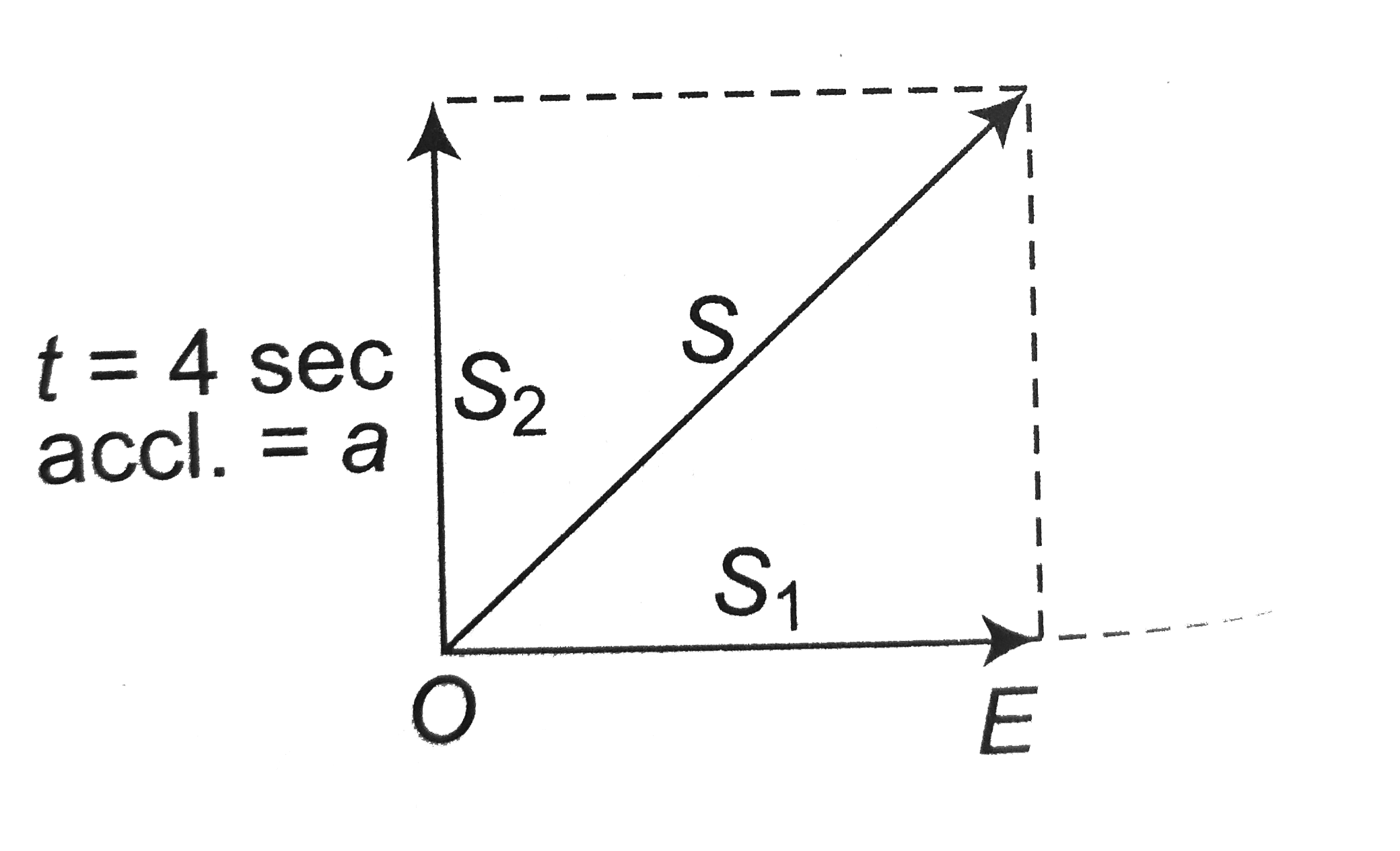Assertion : A body of mass 4 kg has an initial velocity 5ˆims−1. It is subjected to a force of 4ˆjN. The displacement of body from origin after 4 s will be 21.5m.
Reason : The equation v=u+at can be applied to obtain v if a is constant.
If both Assertion and Reason are correct and Reason is the correct explanation of assertion.
If both Assertion and Reason are correct but Reason in not the correct explanation of Assertion.
If Assertion is true but Reason is false.
If Assertion is false but Reason is true.
The correct Answer is:B
a=Fm=1ˆjN
s=ut+12at2=20ˆi+8ˆj
∴s=21.5m
Topper's Solved these Questions
- BOOK - DC PANDEYCHAPTER - MOTION IN A PLANEEXERCISE - (B) Meical entrance special format questions (Mathch the columns)6videos
MOTION IN A PLANE
- BOOK - DC PANDEYCHAPTER - MOTION IN A PLANEEXERCISE - (C )Medical entrances gallery32videos
MOTION IN A PLANE
- BOOK - DC PANDEYCHAPTER - MOTION IN A PLANEEXERCISE - (A) Taking it together75videos
MOTION IN A PLANE
- BOOK - DC PANDEYCHAPTER - MOTIONEXERCISE - Medical entrances gallery19videos
MOTION
- BOOK - DC PANDEYCHAPTER - PROJECTILE MOTIONEXERCISE - Level - 2 Subjective10videos
PROJECTILE MOTION
Similar Questions
A body of mass 2kg has an initial velocity of 3ms−1 along OE and it is subjected to a force of 4N in OF direction perpendicular to OE. Find the distance of the body from O after 4s.
 .View Solution
.View SolutionA particle has initial velocity of 2ˆi and has constant acceleration of 3ˆj . Find its displacement and velocity after 3s. If initially, the particle is located at 3ˆi+4ˆj , find its final location.
View Solution
Knowledge Check
- Question 1 - Select One
A body mass 2kg has an initial velocity of 3 metre//sec along OE and it is subject to a force of 4N in a direction perpendicular to OE. The distance of body from O after 4 sec will be:
 A12 metresB20 metresC8 metresD48 metres
A12 metresB20 metresC8 metresD48 metres - Question 2 - Select One
A particle has an initial velocity of 3ˆi+4ˆj and an acceleration of 0.4ˆi+0.3ˆj. Its speed after 10s is :
A7√2 unitsB7unitsC8.5unitsD10units - Question 3 - Select One
An object of mass 2 kg at rest at origin starts moving under the action of a force
→F=(3t2ˆi+4tˆj)N The velocity of the object at t = 2 s will be -A(3ˆi+2ˆj)m/sB(2ˆi+4ˆj)m/sC(4ˆi+4ˆj)m/sD(3ˆi−4ˆj)m/s
A body of mass 5 kg statrs from the origin with an initial velocity →u=(30ˆi+40ˆj)ms−1. If a constant force (−6ˆi−5ˆj)N acts on the body, the time in which they component of the velocity becomes zero is
View SolutionA particle has initial velocity of (3ˆi+4ˆj)m/s and a acceleration of (4ˆi−3ˆj)m/s2. Its speed after one second will be equal to :-
View SolutionA body of mass m1=4kgmovesat5 hat(i) ms^(-1)anda¬herbodyofmassm_(2) = 2kgmovesat10hat(i)ms^(-1). The kinetic energy of center of mass is
View SolutionA body of mass 5 kg starts from the origin with an initial velocity →u=(30ˆi+40ˆj)ms−1 . If a constant force (−6ˆi−5ˆj)N acts on the body, the time in which the y-component of the velocity becomes zero is
View SolutionA particle of mass 2kg moves with an initial velocity of (4ˆi+2ˆj)ms−1 on the x-y plane. A force →F=(2ˆi−8ˆj)N acts on the particle. The initial position of the particle is (2m,3m). Then for y=3m,
View Solution

